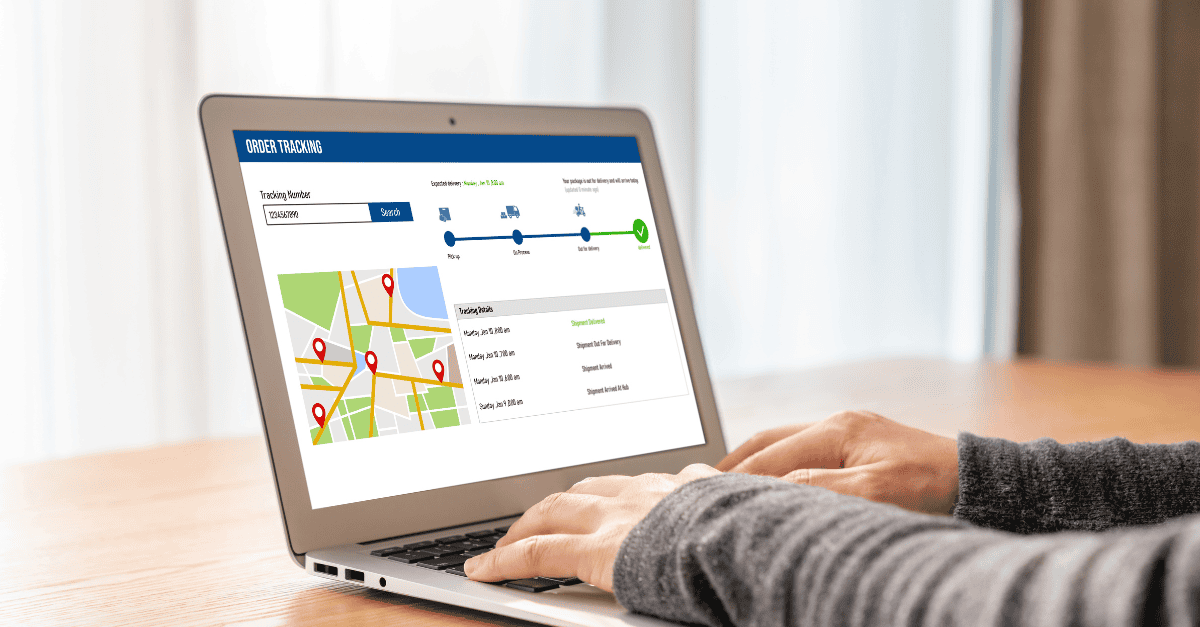
Integrating Inventory Management and OMS
In the fast-paced world of omnichannel commerce, efficient inventory and order management is crucial for success. To successfully balance profitability with customer satisfaction, businesses must maintain optimal stock levels and streamline order fulfilment. This challenge can be overcome through the seamless integration of Inventory Management and Order Management Systems (OMS).
In this comprehensive guide, we’ll explore the intricacies of these two critical aspects of business operations and delve into the techniques, technologies, challenges and best practices that can help you achieve a harmonious and effective integration.
Table of contents
Introduction to inventory management and OMS
Definition of inventory management
Overview of Order Management Systems (OMS)
Importance in modern business
Techniques of inventory management
FIFO and LIFO
Just-In-Time (JIT)
ABC Analysis
Bulk Shipments
Role of OMS in business
Integrating OMS with inventory management
Features and functionality of OMS
Technology in inventory management and OMS
Inventory management software
Features and benefits
Integration with OMS
Case studies
Role of AI and automation
Predictive analytics in Inventory and OMS
Real-time tracking
Efficiency and accuracy
Common issues in inventory management
OMS implementation challenges
Strategic solutions for integration
Aligning inventory and order management goals
Regular auditing and monitoring
Collaborative supplier and customer relationships
The future of inventory management and OMS
Emerging trends
Sustainability considerations
Staying ahead with technology
Summary and key takeaways
Recommendations for successful integration
Introduction to inventory management and OMS
Definition of inventory management
Inventory management is the systematic process of overseeing a company’s stock levels, ordering, storage and utilisation of goods. The primary goal of inventory management is to strike a balance between ensuring enough stock is available to meet customer demand while preventing overstocks to minimise holding costs and waste.
Overview of Order Management Systems (OMS)
An Order Management System, or OMS, is a software solution designed to streamline and automate the entire order lifecycle. It encompasses order creation, inventory allocation, order fulfilment, shipping and returns management. An effective OMS ensures that orders are processed accurately and efficiently to meet – or exceed – customer expectations.
Importance in modern business
In today’s increasingly competitive business landscape, the integration of inventory management and OMS is essential for several reasons:
- Enhanced customer experience: Integration allows businesses to provide complete and accurate information on product availability and delivery times, leading to improved customer satisfaction.
- Cost reduction: Optimised inventory levels reduce storage costs, while efficient order processing minimises the cost of labour, shipping and returns.
- Data-driven decisions: Integration provides real-time insights into stock levels and order processing, empowering businesses to make informed decisions.
- Competitive advantage: Businesses with well-integrated systems can respond faster to market changes and customer demands, gaining a competitive edge.
Techniques of inventory management
Effective inventory management relies on a range of techniques and strategies, the choice of which depends on various factors, including the type of business, industry, product characteristics, demand patterns and the organisation’s specific goals and constraints.
Here are some of the most commonly used techniques in inventory management:
FIFO and LIFO
FIFO (First-In, First-Out) and LIFO (Last-In, First-Out) are two inventory valuation methods. FIFO assumes that the oldest inventory items are sold first, while LIFO assumes that the most recently acquired items are sold first. These methods impact how inventory costs are calculated and can have tax implications.
Just-In-Time (JIT)
The Just-In-Time approach aims to reduce waste by ordering inventory only when it’s needed. This minimises storage costs and ensures that stock levels are closely aligned with customer demand. It is important to note that this approach requires precise forecasting and a reliable supply chain.
ABC Analysis
ABC Analysis categorises inventory into three groups based on value and importance: A items are the most valuable and require tight control; B items are moderately important; and C items have the lowest value and can be managed with less scrutiny. This technique helps allocate resources effectively.
Bulk Shipments
Bulk Shipments involve ordering inventory in larger quantities to benefit from economies of scale and lower per-unit costs. While this can reduce costs, it also ties up capital and requires adequate storage space.
Understanding the OMS in context
Role of OMS in business
An Order Management System plays a pivotal role in ensuring smooth order processing. It involves:
- Order creation: Capturing customer orders accurately.
- Inventory allocation: Reserving stock for orders, at specific stock locations and on a global level.
- Order orchestration: Selecting the optimal stock location to fulfil specific orders.
- Order fulfilment: Picking, packing and shipping products efficiently to meet the Delivery Promise.
- Returns management: Managing returns effectively through any channel (via post, store, warehouse, drop-off point, etc.)
Integrating OMS with inventory management
Seamless integration between your inventory and order management systems is vital for both commercial success and customer satisfaction. Integration of the two allows real-time synchronisation of order data with inventory levels, ensuring that customers can order only what’s available in stock and that orders are allocated to optimise stock levels at each stock location.
Features and functionality of an OMS
Modern OMS solutions offer a wide range of features, including:
- Inventory visibility: Instant access to inventory levels.
- Order tracking: Real-time tracking of order statuses.
- Omnichannel support: Managing orders from various sales channels.
- Returns processing: Streamlined returns and exchanges.
- Reporting and analytics: Generating insights for decision-making.
Technology in inventory management and OMS
Inventory management software
Features and benefits
Inventory management software is a powerful tool that simplifies the management of stock. Some key features and benefits include:
- Real-time inventory tracking: Continuous monitoring of stock levels.
- Forecasting and demand planning: Predicting future inventory needs.
- Supplier management: Managing relationships with suppliers.
- Cost control: Analysing costs related to storage and procurement.
- Barcode scanning: Efficiently tracking items within the warehouse and stores.
Integration with an OMS
The integration of inventory management software with an OMS ensures that inventory data is up-to-date and accurate across all systems. This synchronisation is vital for preventing over-ordering or overselling and optimising order fulfilment.
Case studies
Many businesses have witnessed significant improvements in their operations by integrating inventory management within their Order Management System:
- Inventory at the fashion brand Kaporal was fragmented between e-commerce warehouse stock, store stock and wholesale stock, which was causing product unavailability online even when inventory was available within the retail network. This led to customer dissatisfaction, lost sales, increased discounting and a growing number of unsold products returned to the warehouse at the end of each season. By integrating stock from all locations using an OMS, Kaporal was able to sell more of its inventory faster, reduce operational costs and improve the customer experience.
- As an online marketplace, ManoMano manages inventory and orders that are shipped from its own warehouses, or directly from merchants to customers. With more than 3,000 merchants of different sizes and geographical locations, inventory visibility was complex and delivery times were variable depending on the product and country of delivery. To ensure an optimal shopping experience, ManoMano implemented an OMS to enhance inventory management, ensuring its customers had accurate, reliable and real-time access to stock levels, delivery times and order statuses.
Role of AI and automation
Predictive analytics in inventory and OMS
Artificial Intelligence (AI) and predictive analytics play a crucial role in modern inventory management and OMS. These technologies can forecast demand, identify trends and suggest inventory adjustments, helping businesses stay ahead of customer needs.
Real-time tracking
Real-time tracking powered by AI ensures that businesses have instant visibility into inventory and order statuses. This reduces the risk of stockouts and allows for proactive decision-making.
Efficiency and accuracy
Automation enhances efficiency and reduces the likelihood of human errors. Automated systems can process orders faster, allocate inventory more accurately and reduce order fulfilment times.
Challenges and solutions
Common issues in inventory management
- Overstocking and stockouts: Balancing inventory levels is a constant challenge. Overstocking ties up capital and warehouse space, while stockouts result in lost sales and unhappy customers.
- Data inaccuracies: Inaccurate data can lead to incorrect order processing and poor decision-making. Maintaining data accuracy is crucial to effective inventory management.
OMS implementation challenges
- Integration complexity: Integrating an OMS within existing tech ecosystems can be complex, requiring careful planning and execution.
- Scalability: As a business grows, its OMS must scale to accommodate increased order volumes, more extensive inventories, new sales channels and international markets.
Strategic solutions for integration
- Regular auditing and monitoring: Continuous monitoring of inventory and order management ensures that any issues are detected and resolved promptly, and opportunities for improvement are taken swiftly.
- Employee training: Properly trained staff can make the most of integrated systems, minimising errors, improving efficiency and enhancing the customer experience.
- Advanced planning: Detailed planning is crucial for successful integration. It includes defining roles, responsibilities and timelines, and ensures all stakeholders are invested in a successful implementation.
- Composable architecture: Integrating inventory management and OMS solutions within a composable architecture can greatly enhance a company’s ability to adapt, scale and optimise its operations, taking advantage of best-of-breed solutions that meet specific business needs.
Best practices
Aligning inventory and order management goals
Alignment of inventory and order management goals ensures that all stakeholders are working towards the same objectives, whether it’s maximising sales opportunities, reducing operational costs, or improving the customer experience.
Regular auditing and monitoring
Continuous monitoring and auditing of your systems will help to identify discrepancies or inefficiencies early, enabling timely corrections.
Collaborative supplier and customer relationships
Strong relationships with suppliers facilitate smoother integration. Suppliers can provide accurate lead times, and customers can be kept informed of order statuses and any delays, improving transparency, trust and overall satisfaction.
The future of inventory management and OMS
Emerging trends
The future of inventory and order management is poised for exciting developments, including:
- Blockchain integration: Enhanced traceability and security in supply chains.
- IoT sensors: Real-time data from IoT sensors for accurate inventory tracking.
- Circular economy: Manage inventory and order processing for rental, recycling and re-use.
Sustainability considerations
Sustainability is becoming increasingly important, and effective inventory and order management can help businesses meet their environmental objectives. By utilising predictive analytics, businesses can ensure their inventory levels closely align with customer demand to reduce waste. Order orchestration rules can be set to reduce carbon emissions throughout the order lifecycle, by reducing packaging, optimising transport routes and selecting of eco-friendly carriers.
Staying ahead with technology
To stay competitive, businesses must be able to embrace emerging technologies and adapt quickly to changing customer preferences. This requires a flexible, composable architecture, where every component – including inventory management and OMS – is pluggable, scalable, replaceable and can be continually improved to meet customer demands and business objectives.
Conclusion
The integration of inventory management and OMS is pivotal for success in today’s competitive market. By adopting the right techniques, leveraging technology and implementing best practices, businesses can streamline their operations, reduce costs, improve customer satisfaction and position themselves for future success.
Summary and key takeaways
- Inventory management is the systematic control of stock levels, while Order Management Systems (OMS) streamline order processing. Both contribute to operational efficiencies, cost reductions, sales growth and an enhanced customer experience.
- The integration of inventory and order management allows businesses to automate the optimal utilisation of stock and ensures customers have reliable information about product availability and fulfilment methods throughout their buying journey.
- A modern OMS should utilise AI and automation to enhance efficiency, accuracy and decision-making throughout the product and order lifecycles.
- A composable tech architecture enables businesses to react quickly to adopt best-in-class technologies that meet their customers’ expectations and fulfil specific business objectives.
- There is a growing need to consider the environmental impact of commerce, and this will require an OMS that supports the reduction of carbon emissions throughout the supply chain and facilitates circular economy initiatives.
Recommendations for successful integration
- Invest in modern, agile, best-in-class software for inventory and order management.
- Ensure seamless integration between inventory and OMS technology and processes.
- Embrace AI and automation for data accuracy and predictive capabilities.
- Minimise implementation challenges through careful planning and employee training.
- Stay informed about emerging trends, technologies and sustainability practices to remain competitive in a fast-changing market.
Inventory Management and Order Management Systems (OMS) are the cornerstone of efficient operations, cost control, customer satisfaction and data-driven decision-making. The seamless integration of these two components will not only streamline your business operations but also position your brand for growth, resilience and long-term success in a world where efficiency and customer experience are paramount.
Talk to our unified commerce experts today to unlock the full potential of integrating inventory management and OMS.


